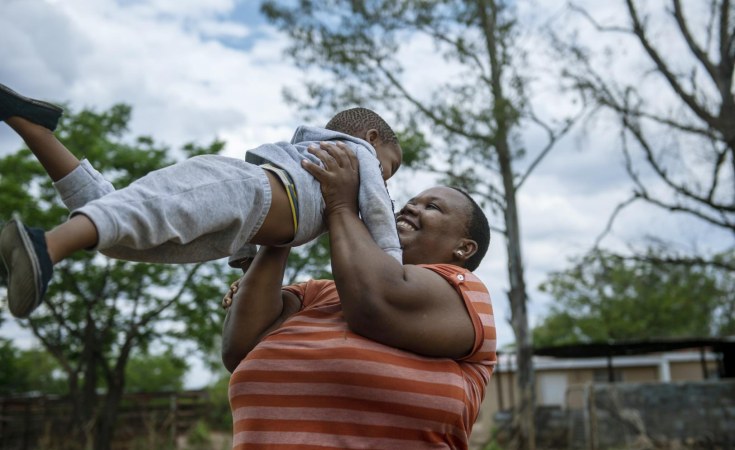Nairobi — Cultural barriers and stigma have been linked as threats to eliminate HIV mother-to-child transmission (MTCT) in Arid and Semi-Arid counties that bear the biggest burden of the transmission.
In a report released by the National Syndemic Diseases Control Council, the factors have attributed to the increased cases of MTCT posing a threat to zero rating the cases of HIV in the country by 2027.
National MTCT rate average is at 8.6 per cent with significant geographical disparity ranging from five percent and to 38.8 percent.
Mandera county is among the county with the highest percentage at (38.8%), Wajir (29.6%), Samburu (25.7%) and Narok county has 21.1 per cent MTCT rate.
"Despite the gains in HIV response, Kenya is yet to meet the target required for the elimination of mother to child transmission of HIV. The cases of MTCT transmission remain high in the four counties," said Douglas Bosire, Program Officer, County Support Division, NSDCC.
Robust intervention to reduce the rate of transmission of HIV from a mother living with HIV to her child during pregnancy, labor, delivery, or breastfeeding might curtail the envisioned target to reduce MTCT of HIV to less than 5 percent.
Only Siaya County recorded mother-to-child transmission as the target at 4.3 percent.
Apart from the four ASALs counties alarm has been raised on 18 counties heavily burdened by MTCT between 2021 and 2022.
They include Mombasa, Lamu, Taita Taveta, Kitui, Machakos, Nyeri, Murang'a, Trans Nzoia, Uasin Gishu, Elgeyo Marakwet, Nandi, Baringo, Kericho, Vihiga, Busia, Kisii, Nyamira and Nairobi.
In the report estimates, the counties have reversed the gains made in preventing MTCT cases between 2021 and 2022.
"In the ASAL counties, it can mainly be attributed to marginalization which hinders access to treatment exposing the pregnant mothers to vulnerabilities,"
"Antiviral Treatment (ART) is important hence the need to scale up facility delivery and outcome of postnatal care," said Japheth Kioko, the head of monitoring and evaluation at NSDCC.
Research has shown that without antiretroviral treatment, one-third of the children who are infected with the virus after birth die within one year.
Approximately 50 percent of untreated HIV infants die by the age of two years.
Patricia Asero an HIV advocate, working with Ringa Women Group cited that the entrenched patriarchal system has hindered access to ante-natal care for pregnant women in the ASALs counties.
Asero explained that incidences where pregnant women are forced to be accompanied by their unwilling partner for the clinics in cases of HIV diagnosis has deterred access to health care.
"In cases where a pregnant woman visits a clinic and she is told to go back home and come with the husband who is unwilling to visit the facility, most time those women lose hope. This is a scenario of human rights violation because you can't be denied a health service from that aspect," she said.
In the MTCT transmission,2,989 cases of mother-to-child transmission of HIV which account for 67 percent are attributed to either pregnancy and breastfeeding women not receiving Antiretroviral treatment, or having their treatment interrupted.
surge in new cases:
Kenya has made progress in the HIV response, as evidenced by the decline in HIV prevalence among adults (15-49 years) in the general population, from a peak of about 8.7% in 2000 to 3.7% in 2022.
New HIV infections in Kenya declined from 101,448 in 2013 to 22,154 in 2022, a 78% reduction in cases.
However,Alarm has been raised in nine counties that have recorded an increase in cases which could significantly drawback efforts to eradicate the epidemic.
The counties include Homa Bay(15.2), Kisumu(14.5), Siaya(13.2),Migori(9.7), Kisii, Mombasa, Samburu(4.3), Vihiga(4.2) and Uasin Gishu(3.7) have been leading in increased new infections.
Six counties which include Nairobi, Kisumu, Homa Bay, Siaya, Migori, and Nakuru each with more than 1000 infections contributed 39% of all new infections.
Usain Gishu, Kisii, Mombasa, Kakamega, Kajiado, Busia, Machakos, Bungoma, Meru, Kiambu, Narok, TransNzoia, Kericho, Turkana each with more than 500 new infections-contributed an additional 39% of all new infections in the country.
Concerns have been raised over new HIV infections among children, adolescents, and young people with reports of an estimated 62 new infections per week among adolescents aged 10-19.
The driving factor for new infections among adolescents and young women aged between 10 and 19 years has been attributed to the triple threat.
The overlapping challenge of new HIV infections, unintended pregnancies, and sexual and gender-based violence among children, adolescents, and young women, dubbed the Triple Threat, undermines the impact of investments made.
According to the data released in 2022 regarding new infections, Kisumu had the highest number of new infections in 2022 with 335 cases, Homa Bay followed with 313 cases, Siaya with 251, Migori with 197, and Nakuru with 196.
Nairobi had 187 cases, Uasin Gishu had 122, Kisii with 111, Kajiado had 101 and Kakamega with 196 cases, Trans Nzoia had 81 new infections, and Kericho had 74.


